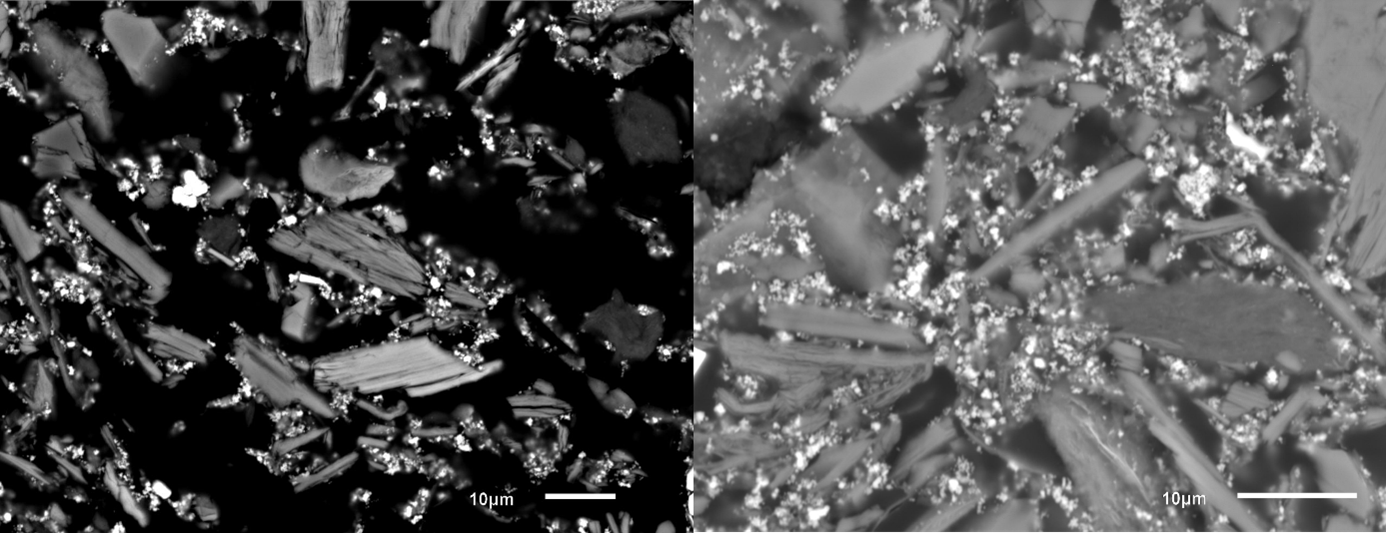Thermal and mechanical properties of carbonaceous chondrite analogues
- 1Institut für Planetologie, University of Münster, Münster, Germany (moritz.goldmann@uni-muenster.de)
- 2Institut für Planetenforschung, Deutsches Zentrum für Luft- und Raumfahrt e.V., Berlin, Germany
- 3Leibniz-Institut für Evolutions- und Biodiversitätsforschung, Museum für Naturkunde, Berlin, Germany
Thermal and mechanical properties of carbonaceous chondrite analogues
Background
As small bodies with the most similar elemental abundance compared to the solar photosphere (Lodders et al., 2009), C-type asteroids are of great interest for studying the early formation of small bodies. However, there is little information about their structure.
Based on thermal infrared observations of the C-type asteroid Ryugu, a regolith-covered surface with cm-sized particles was predicted (Grott et al., 2019). However, the Hayabusa 2 spacecraft found that the surface is covered with larger boulders, suggesting a high porosity of the boulders to match the infrared observations (Grott et al., 2019).
Unfortunately, there are no chondrites found on Earth with similar thermal properties that could be analysed to obtain more information about their structure and thermal properties thermal.
Project idea
To tackle this problem, we produce carbonaceous chondrite analogues with a wide range of porosities in the laboratory to compare their thermal and mechanical properties with the low porosity carbonaceous chondrites found on earth with the aim to extend the already available dataset to higher porosities (see figure 1).
To simulate the raw material of carbonaceous chondrites, we use the main mineral components found in the material returned from Ryugu (Tachibana, 2023) as well as sub-bituminous coal as a simple analogue for the complex organic composition (Metzger et al., 2019).
The components are either mixed with distilled water to mobilise the individual grains and to establish contacts between them. This dust-water mixture is frozen to obtain centimetre-sized cylinders and is then dried in vacuum to remove the water. This then creates a competent sample with defined porosity.
Another procedure to create the samples is to mix the ingredients with water ice microspheres (Kreuzig et al., 2023). This mixture is then compressed to a desired porosity and is also dried in vacuum.
The thermal properties of the so-created samples, such as the thermal conductivity, the thermal diffusivity and the heat capacity, are then measured in vacuum at temperatures between 100 K and 400 K using an active temperature control system and the transient hot disc method (Gustaffson et al., 2024). The mechanical properties such as the tensile strength, compressive strength and the elasticity constants are also measured in vacuum using the Brazilian disc test (Markides and Kourkoulis, 2016) and the unconfined compression test (Xiao et al., 2018) to avoid the influence of moisture on the highly fragile samples.
During this conference, we intend to present our sample preparation methods, our experimental techniques and first results of our work.

Figure 1: SEM images of two analogue samples with ~65% porosity (left) and ~35% porosity (right)
References
Lodders et al. (2009): 4.4 Abundances of the elements in the Solar System: Datasheet from Landolt-Börnstein - Group VI Astronomy and Astrophysics · Volume 4B: "Solar System" in SpringerMaterials. https://doi.org/10.1007/978-3-540-88055-4_34
Grott et al. (2019): Low thermal conductivity boulder with high porosity identified on C-type asteroid (162173) Ryugu. Nat Astron 3, 971–976 (2019). https://doi.org/10.1038/s41550-019-0832-x
Tachibana (2023): Mineralogy of Returned Sample from C-Type Near-Earth Asteroid (162173) Ryugu. In: Bindi, L., Cruciani, G. (eds) Celebrating the International Year of Mineralogy. Springer Mineralogy. Springer, Cham. https://doi.org/10.1007/978-3-031-28805-0_11
Metzger et al. (2019): Measuring the fidelity of asteroid regolith and cobble simulants. Icarus, Volume 321, 2019, Pages 632-646. https://doi.org/10.1016/j.icarus.2018.12.019
Kreuzig et al. (2023): Micrometre-sized ice particles for planetary science experiments – CoPhyLab cryogenic granular sample production and storage, RAS Techniques and Instruments, Volume 2, Issue 1, January 2023, Pages 686–694. https://doi.org/10.1093/rasti/rzad049
Gustafsson et al. (2024): Measurement of Thermal Transport in Solids with the Hot Disc Method. Int J Thermophys 45, 1 (2024). https://doi.org/10.1007/s10765-023-03284-1
Markides and Kourkoulis (2016): The influence of jaw's curvature on the results of the Brazilian disc test. Journal of Rock Mechanics and Geotechnical Engineering, Volume 8, Issue 2, 2016, Pages 127-146. https://doi.org/10.1016/j.jrmge.2015.09.008
Xiao et al. (2018): Mechanical Analysis of Unconfined Compression Test of Cylinder. Transportation Research Record, 2672(27), 37-44. https://doi.org/10.1177/0361198118791912
How to cite: Goldmann, M., Agrawal, B., Gundlach, B., Güttler, C., Patzek, M., Grott, M., and Greshake, A.: Thermal and mechanical properties of carbonaceous chondrite analogues, Europlanet Science Congress 2024, Berlin, Germany, 8–13 Sep 2024, EPSC2024-348, https://doi.org/10.5194/epsc2024-348, 2024.